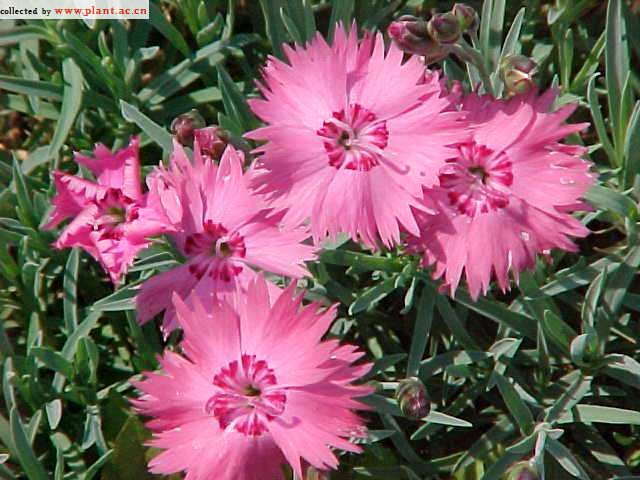Dianthus gratianopolitanus GrandiflorusCheddar pink
科:石竹科
Family:Caryophyllaceae
属:石竹属
common name:Cheddar pink
introduce:Plant Type: Herbaceous perennial
Family: Caryophyllaceae
Missouri Native: No
Native Range: None
Height: 0.5 to 1 foot
Spread: 1 to 2 feet
Bloom Time: May - July
Bloom Color: Rose pink
Sun: Full sun (only)
Water: Medium moisture
Maintenance: Low
General Culture:
Easily grown in average, medium wet, well-drained soil in full sun. Well-drained soils are essential to prevent crown rot. Plants will usually not survive in wet winter soils. Plants prefer slightly alkaline soils. Species tolerates heat and humidity (as well as some drought) better than most other species of dianthus. Remove spent flowers to promote continued bloom. After flowering is completed, plants may be lightly sheared back to maximize foliage effect as a dense ground cover.
Noteworthy Characteristics:
This dianthus cultivar is one of the cheddar pinks. It is a mat-forming perennial which produces numerous scented rose-pink flowers (to 1.5" diameter) singly or in twos atop wiry stems (to 12" tall) arising from tufted mounds of grassy, gray-green, linear foliage. Flowers are larger than those of most other cultivars in this species, hence the common name. Blooms in spring with some intermittent rebloom in summer, particularly if flowers are promptly deadheaded before producing seed.
Problems:
No serious insect or disease problems. Crown rot can be a serious problem if plants are grown in wet, poorly drained soils.
Uses:
Cheddar pinks are best in rock gardens, border fronts or in some difficult sites such as rocky slopes or over stone walls. Effective small area ground cover. Also an effective edging plant.
